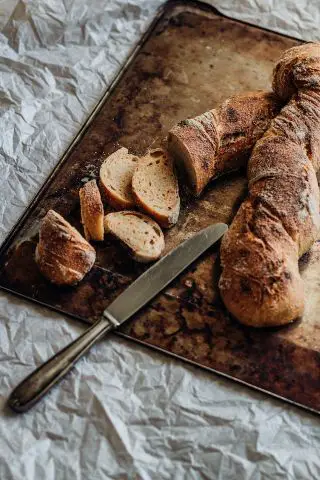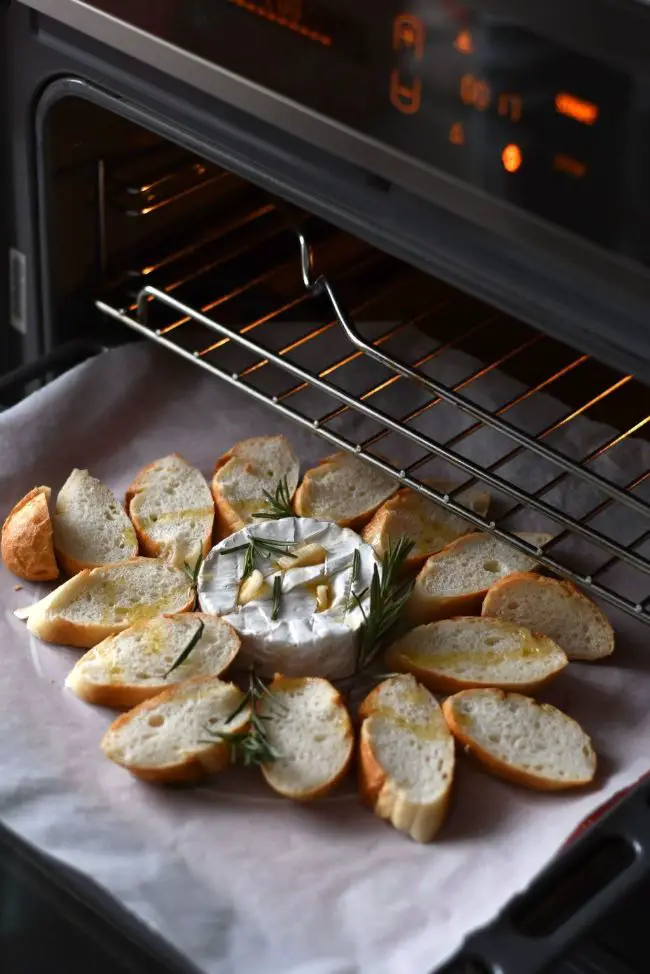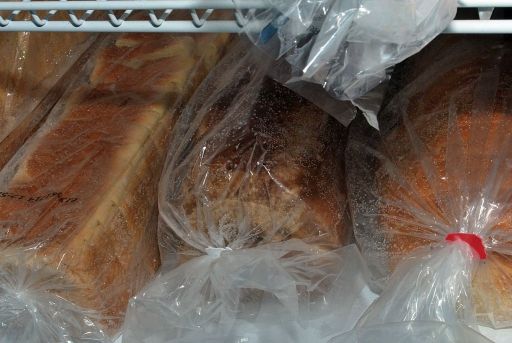Baking bread at home is a delightful experience, filling your kitchen with a comforting aroma and promising the joy of freshly baked goodness.
But before you eagerly dive into that warm loaf, it’s essential to know how long to let the bread cool before wrapping it up.
The cooling process is a crucial step in maintaining the texture, flavor, and overall quality of your homemade bread.
In this article, I’ll reveal how long to let bread cool before wrapping, why it’s important to let bread cool, and address the concern of whether bread needs to cool before cutting. Let’s dive in!
How Long To Let Bread Cool Before Wrapping – Revealed
Allow your freshly baked bread to cool for about 1 to 2 hours before wrapping it up.
This time frame ensures that the bread’s internal moisture redistributes, preventing condensation and sogginess inside the wrapping.
While the exterior might feel cool after just a short while, the inside needs a bit more time.
This patient cooling process contributes to a crispier crust and a moist, airy interior, making your bread experience all the more delightful when you finally indulge.
Why Is It Important to Let Bread Cool? Top 5 Reasons
Allowing bread to cool might seem like an exercise in patience, especially when the tantalizing scent is practically begging you to devour it.
However, this seemingly small step holds substantial benefits you wouldn’t want to miss out on.
Here’s why it’s crucial to exercise restraint and let your bread cool properly:
1. Moisture Distribution
The distribution of moisture within freshly baked bread is not uniform when it emerges from the oven.
A significant amount of moisture tends to be concentrated near the center of the loaf.
However, as the bread cools down, this moisture gradually spreads more evenly throughout the entire loaf.
This process is crucial for enhancing the bread’s overall texture. By allowing moisture to disperse evenly, the bread’s interior avoids becoming excessively sticky or damp, ensuring that it can be enjoyed without any undesirable sogginess.
2. Texture Development
While the bread is in the baking process, the starches contained within it undergo a fascinating transformation referred to as gelatinization.

During this process, the starches absorb moisture and expand in volume. Remarkably, this alteration persists even after the bread is removed from the oven, owing to the retained heat.
Allowing the bread to cool gradually provides ample time for the starches to complete their transformative journey.
Consequently, this intricate process contributes to the creation of a highly desirable texture that is universally cherished a crisp and flavorful crust enveloping a delicate, airy interior.
3. Easier Slicing
Slicing bread while it’s still hot poses challenges due to the state of its interior, known as the crumb.

The crumb, or the inner part of the bread, hasn’t fully set during the initial stages of cooling. This results in an unfavorable slicing experience, often yielding uneven and distorted slices.
However, affording the bread the opportunity to cool down adequately leads to the firming up of the crumb.
This transformation significantly facilitates the slicing process, allowing for the creation of impeccably even slices that aptly showcase the structural integrity of the bread.
4. Flavor Development
The process of flavor development in freshly baked bread continues even post-baking.
Practicing patience by allowing the bread to gradually cool prior to consumption leads to a harmonious blending of its various taste components.
Over this period, the flavors intermingle and evolve, resulting in a heightened sense of refinement and complexity.
This transformation greatly elevates the overall eating experience, providing a more profound and enjoyable sensation
5. Crust Crispness
The cooling phase significantly influences the texture of the bread’s crust. Consuming the bread when it’s still hot can lead to an excessively hard crust.
This not only complicates the slicing process but also detracts from the pleasurable aspect of consumption.
Conversely, a gradual cooling process contributes to a slight softening of the crust, while still retaining its desired crispness.
Finding the right balance makes sure that the bread is just the perfect texture neither too hard nor too soft. This gives you a satisfying experience both in how it feels and how it tastes.
Does Bread Need To Cool Before Cutting?
Yes, you should let the bread cool before cutting it. When bread comes out of the oven, its internal moisture is still settling, and cutting it immediately can make it gummy and affect its texture.
Allow it to cool for about 45-60 minutes and letting the moisture redistribute will give you a better slicing experience and maintain the desired fluffiness.
Plus, hot bread can be harder to handle and may lead to uneven slices. So, a little patience goes a long way in achieving that perfect, nicely sliced-loaf!
How long to let bread cool?
You should let the freshly baked bread cool for about 1 to 2 hours before slicing and serving.
This allows the moisture within the bread to redistribute evenly, giving you a better texture and preventing the bread from becoming too gummy.

However, the exact cooling time can vary depending on the size of the loaf, the type of bread, and the ambient temperature.
For smaller rolls or buns, 15-30 minutes of cooling will be sufficient, and for larger loaves, like sourdough, baguettes or sandwich loaves, an extended cooling period of around 2 hours is beneficial, as it allows the flavors to fully develop and the texture to become even more delightful.
If you slice into bread too soon after baking, the interior will still be too steamy and soft, which can affect the overall eating experience.
How to cool bread quickly? 5 Easy Steps
To cool bread quickly, follow these steps:
1. Slice the Bread
When you have a whole loaf of bread, it’s advantageous to cut it into smaller slices.
This is because smaller slices of bread have the ability to cool down more quickly compared to leaving the loaf intact.
Slicing the bread exposes a larger surface area, which enables heat to dissipate more effectively.
As a result, the bread cools down faster due to the increased efficiency in heat escape.
2. Separate the Slices
If you’ve already sliced the bread, it’s important to avoid placing the slices directly on top of one another.
You should create some space between the slices. By doing so, you encourage the movement of air between each slice.
This airflow plays a significant role in expediting the cooling process by carrying away the heat that the bread emits.
3. Ensure Ventilation
To facilitate the rapid cooling of your bread, it’s essential to select a location that offers proper air circulation.
Consider utilizing a wire cooling rack, as it permits air to flow beneath the bread. Alternatively, you can choose a clean and dry surface for cooling.
Avoid placing the bread on a solid surface, as solid surfaces tend to trap heat, which can result in slower cooling for the bread.
Opting for well-ventilated placement options ensures that the heat is able to disperse efficiently, allowing the bread to cool down more swiftly.
4. Utilize Airflow or a Fan
If you have the convenience of a fan or if there’s a natural cool breeze in your surroundings, it’s beneficial to place the bread in proximity to these airflow sources.
The reason behind this is that the movement of air, either from a fan or the breeze, expedites the process of heat dissipation from the bread.
Consequently, the bread cools down more rapidly.
5. Freezer Method (Optional)
In scenarios where achieving rapid cooling is particularly important, there’s an additional method at your disposal.

This involves placing the sliced bread in the freezer for a short duration. However, it’s essential to exercise caution and not leave the bread in the freezer for an extended period.
Prolonged exposure to freezing temperatures can lead to an excessive removal of moisture from the bread, resulting in it becoming overly dry.
Additionally, the bread might develop an undesirable taste known as freezer burn, which arises due to prolonged freezing.
How Long To Let Bread Cool Before Wrapping – Conclusion
In conclusion, exercising patience and allowing your freshly baked bread to cool before wrapping or slicing is a fundamental step that significantly enhances the quality of your bread-eating experience.
While the tempting aroma might urge you to dive in right away, the benefits of proper cooling are well worth the wait.
By giving your bread time to cool for about 1 to 2 hours, you’re allowing its internal moisture to redistribute, preventing unwanted condensation and ensuring a crispy crust and airy interior.
So, whether you’re baking smaller rolls or larger loaves, the principle remains the same. Ultimately, a short wait leads to a more enjoyable and delicious bread-eating experience.

